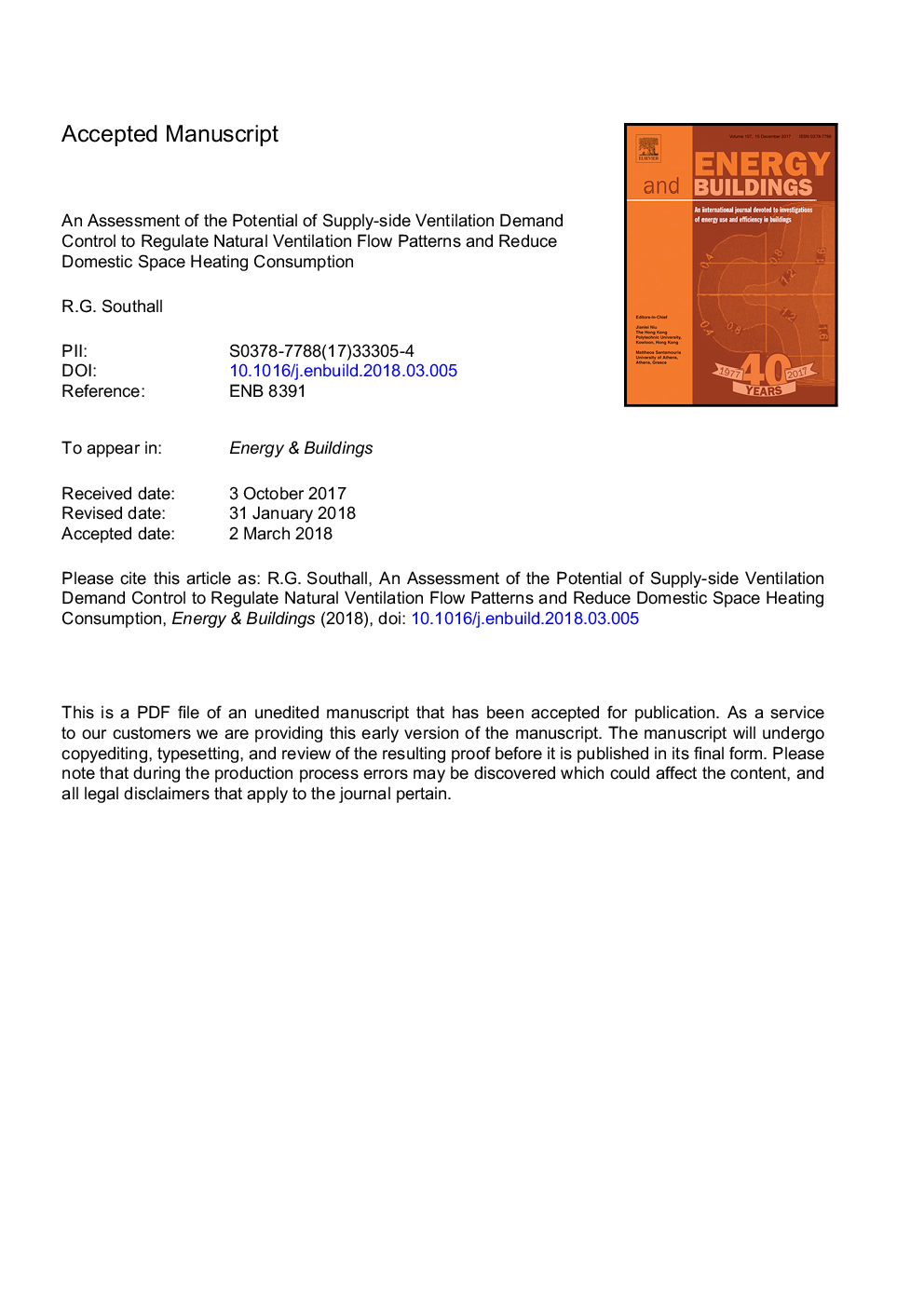| Article ID | Journal | Published Year | Pages | File Type |
|---|---|---|---|---|
| 6728069 | Energy and Buildings | 2018 | 22 Pages |
Abstract
Uncontrolled natural ventilation systems tend, by their nature, to deliver varying flow rates that are not necessarily optimised for human comfort or energy efficiency. Moreover these ventilation flow rates may not be delivered along the intended flow paths through a building, possibly further reducing ventilation effectiveness and increasing ventilation heat losses. These characteristics make natural ventilation systems a suitable candidate for ventilation demand control where the levels of fresh air delivered respond to a sensed parameter that indicates the level of ventilation demand. This paper makes a preliminary, comparative assessment of the impact an active supply-side CO2 ventilation demand control system may have on the ventilation regime, flow levels and space heating consumption of a two-storey naturally ventilated domestic property. The dwelling is modelled in EnergyPlus and the performance of the ventilation demand control system simulated using EnergyPlus' run-time Energy Management System. Simulations are conducted for a variety of temperate climate contexts and building fabric leakage levels. The simulations demonstrate that the ventilation demand control system could reinforce desired flow regimes and provide comparable indoor air quality compared to the uncontrolled base case whilst delivering significant reductions in space heating consumption.
Keywords
Related Topics
Physical Sciences and Engineering
Energy
Renewable Energy, Sustainability and the Environment
Authors
R.G. Southall,
